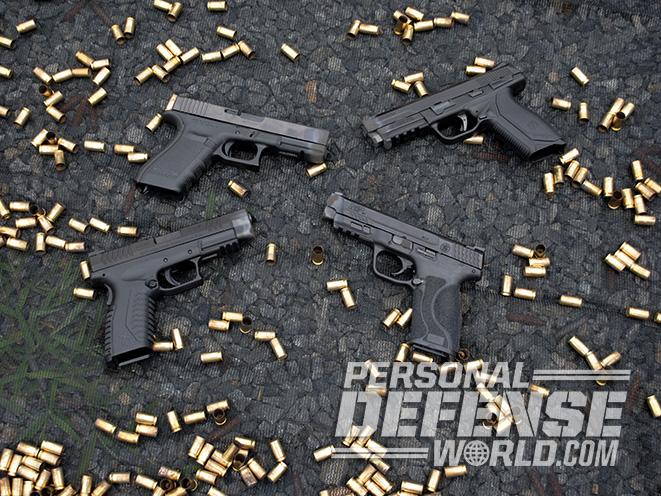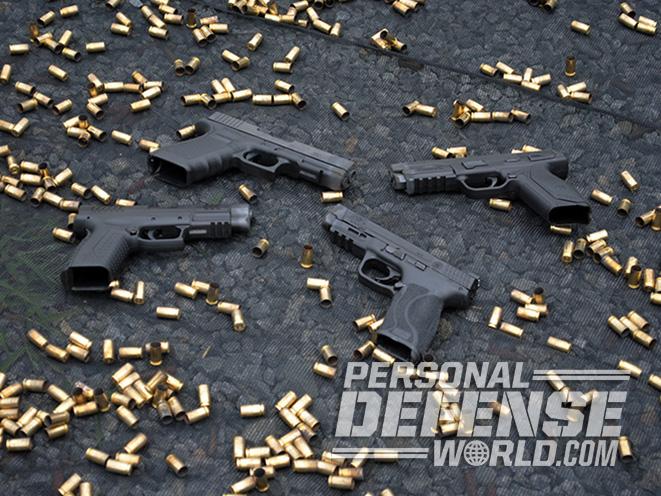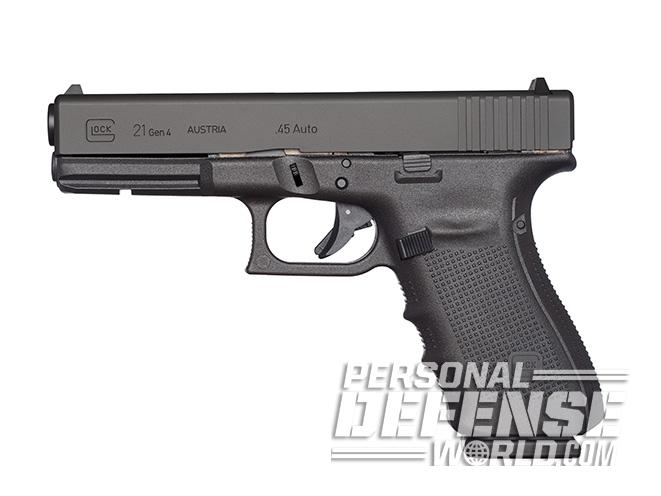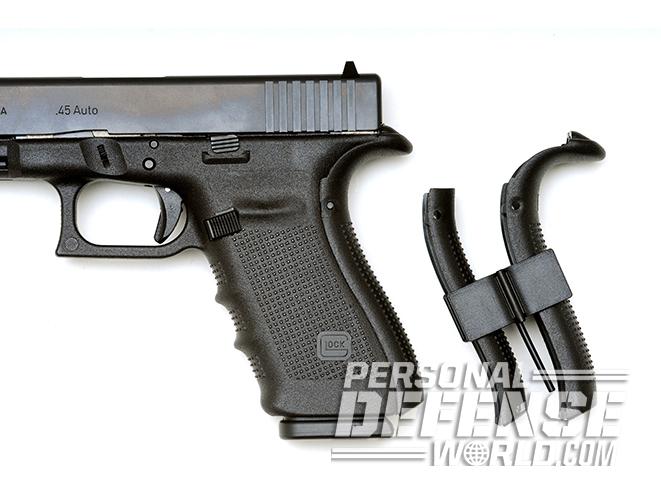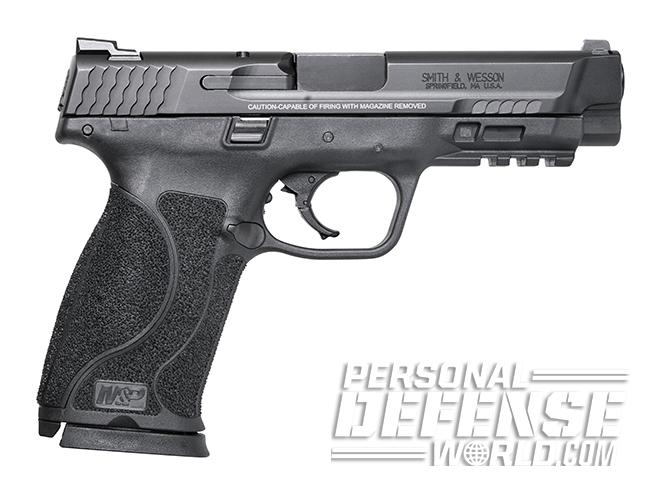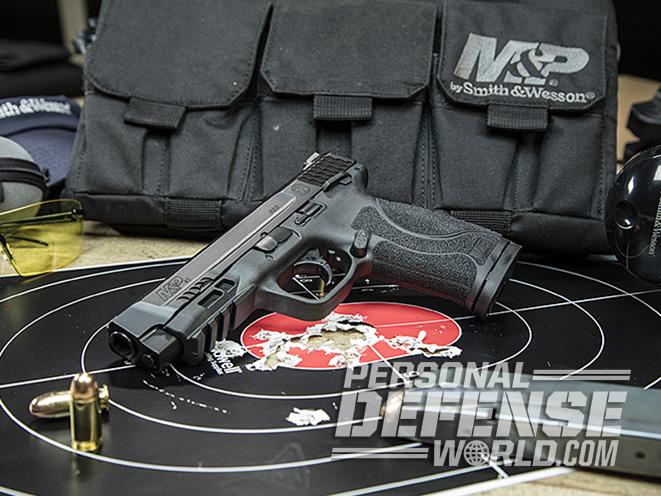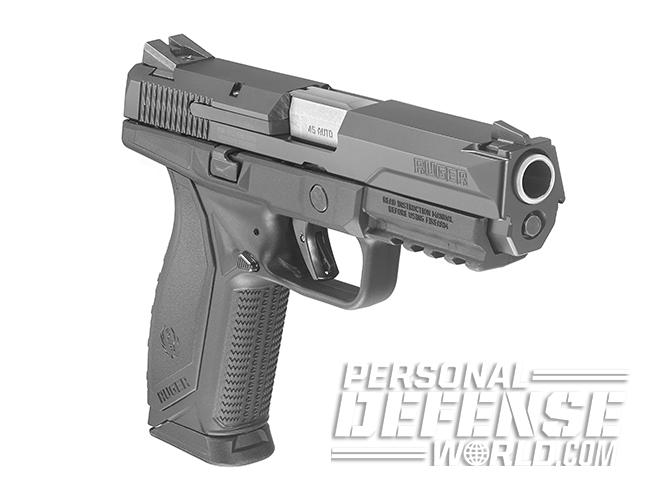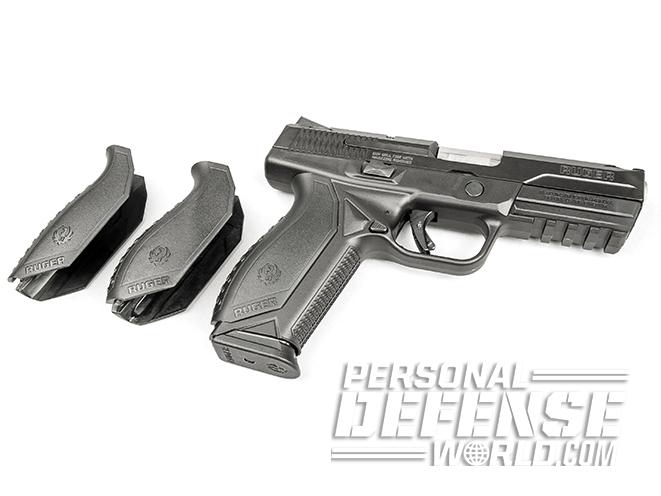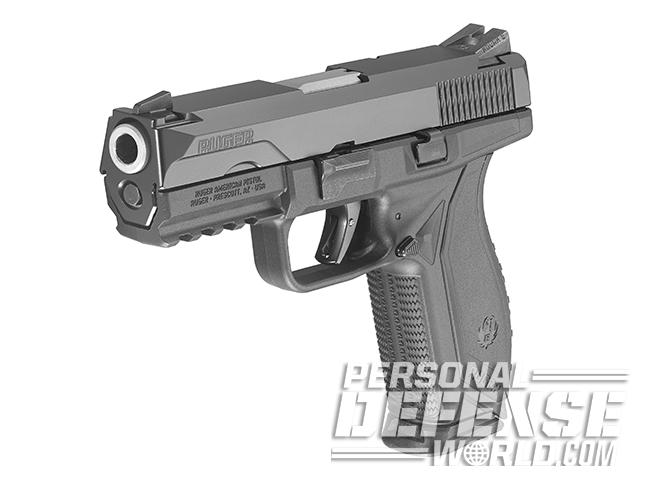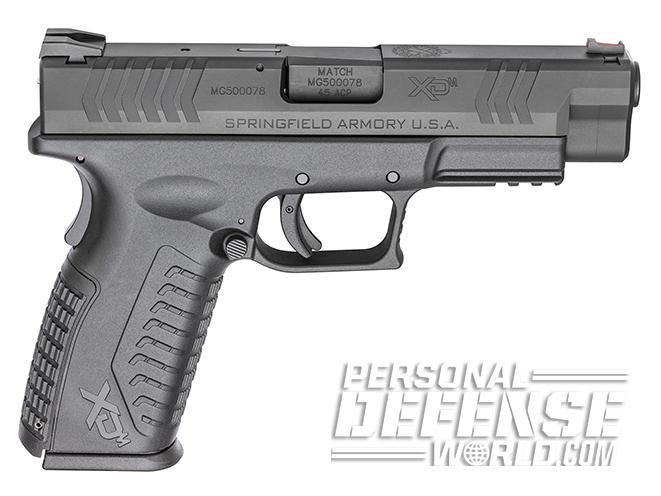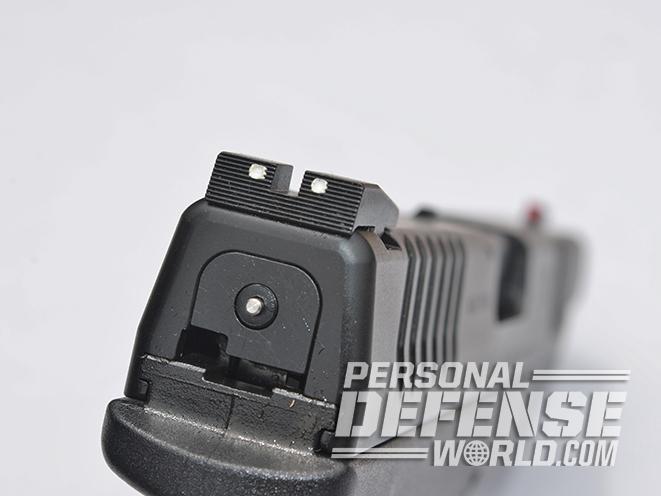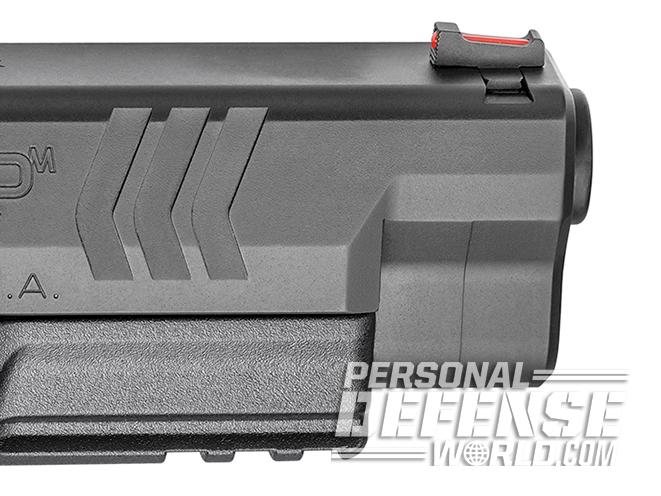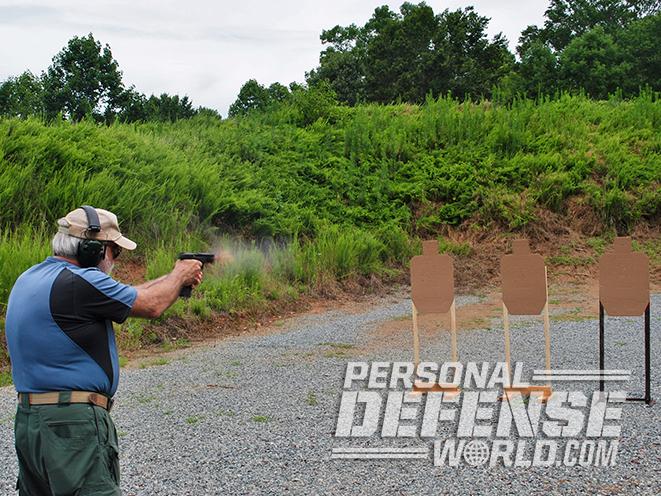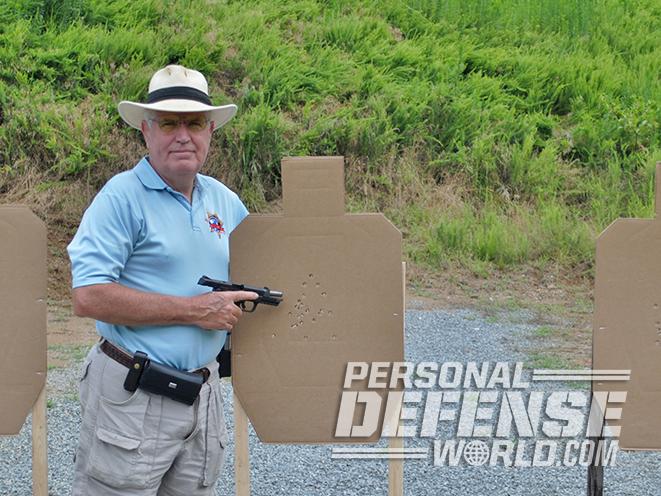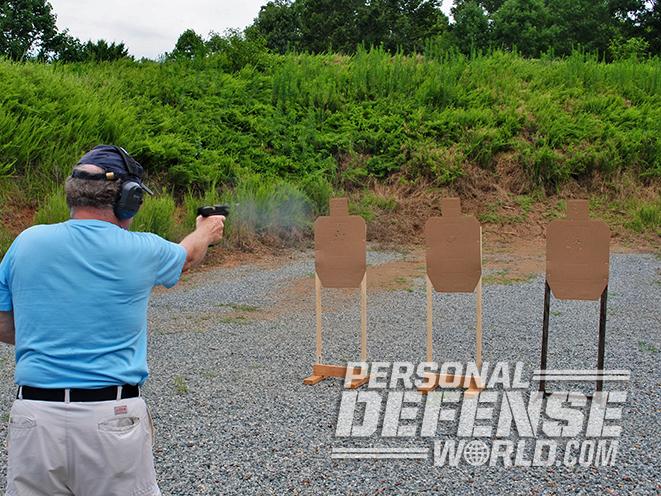Anyone who peruses gun magazines is aware of two major trends in the American handgun scene: the popularity of polymer-framed pistols and the resurgence of interest in the 9mm Parabellum cartridge. Every handgun manufacturer of note now offers “plastic” pistols chambered for Georg Luger’s cartridge.
And while there is still a vocal group of traditionalists who bemoan these developments, they are slowly but surely being brought over from their insistence upon “real steel and walnut” pistols to accept the advantages of modern polymer technology.
But when it comes to the 9mm, most of these traditionalists refuse to budge from their belief that “bigger bullets are better bullets” and continue to champion the .45 ACP cartridge for defensive purposes.
Advertisement — Continue Reading Below
While the firearms media is awash today with stories of the 9mm cartridge and the polymer- framed pistols chambered for it, we felt that we’d follow the beat of a different drummer and compare a selection of polymer-framed pistols chambered for the iconic .45 ACP cartridge. While there are a number of polymer 45 pistols on the market today, print space and time limits resulted in us restricting ourselves to a quartet of the newest and/or most popular of the breed: the Smith & Wesson M&P45 M2.0, the Glock 21 Gen4, the Ruger American Pistol and the Springfield Armory XDM 4.5″.
Settling The Score
These polymer 45 ACP handguns all contain similar features, which makes it easier to compare them. They’re all striker-fired with polymer frames, steel slides, high-capacity (10- to 14-round) magazines, interchangeable backstraps, ambidextrous or reversible controls, accessory rails, durable/high-tech finishes, similar disassembly processes and fixed sights.
To see if any one provided advantages over the others, we decided to run them through a series of defensive-type drills. So as to have the input of several shooters, I obtained the assistance of my friends Dick Jones and Richard Cole, both of whom are competitive shooters, CCW permit holders and fans of the .45 ACP. After much discussion—and argument—we decided the following drills would give us of us a basic understanding of each pistol’s positive and negative features:
Advertisement — Continue Reading Below
- Modified El Presidente: Lift the pistol and double-tap each of three targets at 7 yards. Perform a combat reload and repeat. Run the drill two more times.
- FBI Drill: Lift the pistol and fire two body shots and one headshot on a pair of targets at 7 yards. Reload and repeat. Run the drill two more times.
- One-Handed Drill: Lift the pistol and engage three targets at 5 yards with two rounds each, firing all of the rounds with an unsupported (one-handed) grip. Run the drill three more times.
Make-up shots would only be allowed for misses. This meant that each shooter would fire a minimum of 96 rounds from each pistol for a total of at least 384 rounds.
Aguila Ammunition provided us with a quantity of 230-grain FMJs sufficient to our purposes. This high-quality, Mexican-made ammunition performed admirably, and we did not experience a single ammo-related malfunction. To have something to perforate, the Target Barn kindly supplied us with cardboard IPSC targets. All of the drills began with the shooter holding the pistol at the low-ready position.
- RELATED STORY: 3 .45 ACP Pistols to Use on Your Next Whitetail Hunt
Each shooter graded each pistol on a 1 (worse) to 5 (best) scale in seven categories: reliability, ergonomics, trigger control, sights, off-hand accuracy and ease of reloading. These were then added together to give each pistol a final score. So as to level the playing field a bit, I installed the medium- sized backstrap on each pistol.
Advertisement — Continue Reading Below
A few days before we met at the Piedmont Handgunners Association range in Southmont, North Carolina, I tested the four polymer .45 pistols for accuracy by firing them from an MTM K-Zone rest at 50 feet. All four shot to the point of aim and showed they were capable—with careful nursing of their triggers—of producing five-shot groups in the 2-inch range, which I felt was an impressive performance for service type handguns. I then disassembled, cleaned and oiled the pistols, which would be the only maintenance they received during test-firing other than wiping off visible grit or residue with a cloth. If a pistol choked, the shooter would attempt to clear the malfunction and, if possible, keep on shooting.
The Battle Begins
Taking turns, we each proceeded to fire the four polymer 45 ACP pistols, alternating them so as to allow them to cool off (it was a hot, humid day with the temperatures in the upper 80s). While one person shot, the other acted as a range officer and changed targets while the third loaded magazines, an onerous task made easier thanks to Brownells providing us with a pair of UpLULA magazine loaders. As we shot, my wife, Becky, took photos that, with editing, would hopefully make us all look very skillful.
We began shooting about at 11 a.m. and continued, with a 30-minute break for lunch, until 2:30 p.m. By the time the smoke cleared, we had sent almost 1,200 rounds of hardball ammunition downrange and were very glad to have brought along a ground sheet for the ejected cases to land on. And all three of us freely admitted to having sore hands.
Advertisement — Continue Reading Below
Before I go any further, I want to mention that during this excessive expenditure of ammo, all four of our test pistols functioned flawlessly. That’s right. We did not experience a single malfunction despite the fact that they all were new-out-of-the-box pistols, each using five different magazines, and the pistols got quite dirty.
Despite protests from my two compatriots, both of whom are avid reloaders, I informed them that we had to score the pistols before they could police up the brass. With the help of Becky and her pocket calculator, we added up each pistol’s scores, and they finished as follows:
| Manufacturer | Reliability | Ergonomics | Trigger Control | Recoil Control | Sights | Off-Hand Accuracy | Reloading Ease | Total |
|---|---|---|---|---|---|---|---|---|
| Glock 21 Gen4 | 15 | 10 | 9 | 10 | 8 | 14 | 14 | 80 |
| Ruger American | 15 | 12 | 12 | 11 | 13 | 14 | 10 | 87 |
| S&W M&P45 M2.0 | 15 | 14 | 14 | 13 | 11 | 14 | 15 | 96 |
| Springfield Armory XDM 4.5″ | 15 | 13 | 14 | 11 | 15 | 14 | 11 | 93 |
A bit of explanation of these results is in order. As for reliability, what can I say? They all ran like gangbusters. Ergonomics and recoil control are closely related, and the results mirrored each other. The S&W’s new grip texturing got a big thumbs up from all three of us, as it greatly aided in recoil control. As can be seen by the close scores, the shape of the Springfield and Ruger grips were well liked. While the Glock’s grip provided a secure purchase, two of us have relatively small hands and found the grip a bit too fat for positive control. Even though I felt the Ruger was the heaviest recoiling of our quartet of test guns, I fired my best targets with it. Go figure.
Advertisement — Continue Reading Below
Trigger control was a subjective call. Richard Cole, an avid 1911 shooter, did not care for any of the pivoting triggers while Dick Jones and I both have extensive experience with the Springfield and Glock. The Ruger had a heavier trigger pull than the S&W and Springfield, and we all felt that the Glock’s was the grittiest of the four and had the worst let-off.
As for sights, it was unanimous that the Springfield’s red fiber-optic front sight provided the best sight picture and the fastest target acquisitions. None of us are fans of the three-white-dot sighting arrangement, and we also felt that the Glock’s white-outlined rear sight produced a blurry sight picture. Dick Jones said that if we had brought along a black marker pen and blacked out the offending dots and outline, we all would have shot better.
Accuracy was another four-way tie, although several of us freely admitted to purposely firing slower and more carefully with pistols whose sights/ergonomics we found problematic. My excuse is that I always tend to fall into “USPSA mode” and shoot too fast, and I’m sticking to it.
Advertisement — Continue Reading Below
As for ease of reloading, we all found the S&W’s magazine release to be the most positive in operation while the Glock’s was the largest and easiest to acquire, but its polymer magazines did not always drop free and on occasion had to be pulled out. The ambidextrous magazine releases on the Springfield and Ruger proved problematic as Dick and Richard both hit the right-hand release on occasion when acquiring a grip, dropping loaded magazines. I found inserting a fully loaded magazine into the Springfield with the slide forward required an inordinate amount of effort, which twice led to me dropping loaded magazines during combat reloads.
And The Winner?
After we were finished, I queried my friends as to their top choice of the four. Dick Jones said he was torn between the Springfield and the Smith & Wesson while Richard, despite his freely admitted dislike of all their triggers, chose the S&W. Me? Well, since I own several of them and have used them for competitions for years now, my money goes on the Springfield.
In conclusion, we found our four polymer 45 ACP pistols all provided more than sufficient reliability, accuracy and positive handling features for a service-type autoloader. You wouldn’t go wrong with any of them, so my recommendation is to try all of them and choose the one that handles and shoots best for you.
Advertisement — Continue Reading Below
Polymer 45 ACP Pistol Specs
| Manufacturer | Glock 21 Gen4 | Ruger American Pistol | S&W M&P45 M2.0 | Springfield Armory XDm 4.5″ |
|---|---|---|---|---|
| Caliber | .45 ACP | .45 ACP | .45 ACP | .45 ACP |
| Barrel | 4.6 inches | 4.5 inches | 4.6 inches | 4.5 inches |
| OA Length | 8.03 inches | 8 inches | 7.9 inches | 7.7 inches |
| Weight | 29.3 ounces (empty) | 31.5 ounces (empty) | 27 ounces (empty) | 31 ounces (empty) |
| Grip | Polymer | Polymer | Polymer | Polymer |
| Sights | Fixed | Novak LoMount Carry three-dot | Three-dot | Fiber-optic front, white-dot rear |
| Action | Safe Action | Striker-fired | Striker-fired | Striker-fired |
| Finish | Matte black | Matte black | Matte black | Matte black |
| Capacity | 13+1 | 10+1 | 14+1 | 13+1 |
| MSRP | $687 | $579 | $599 | $651 |
For More Information
Glock
glock.com
Ruger
ruger.com
Smith & Wesson
smith-wesson.com
Advertisement — Continue Reading Below
Springfield Armory
springfield-armory.com
This article was originally published in “Combat Handguns” November/December 2017. To order a copy and subscribe, visit outdoorgroupstore.com.
